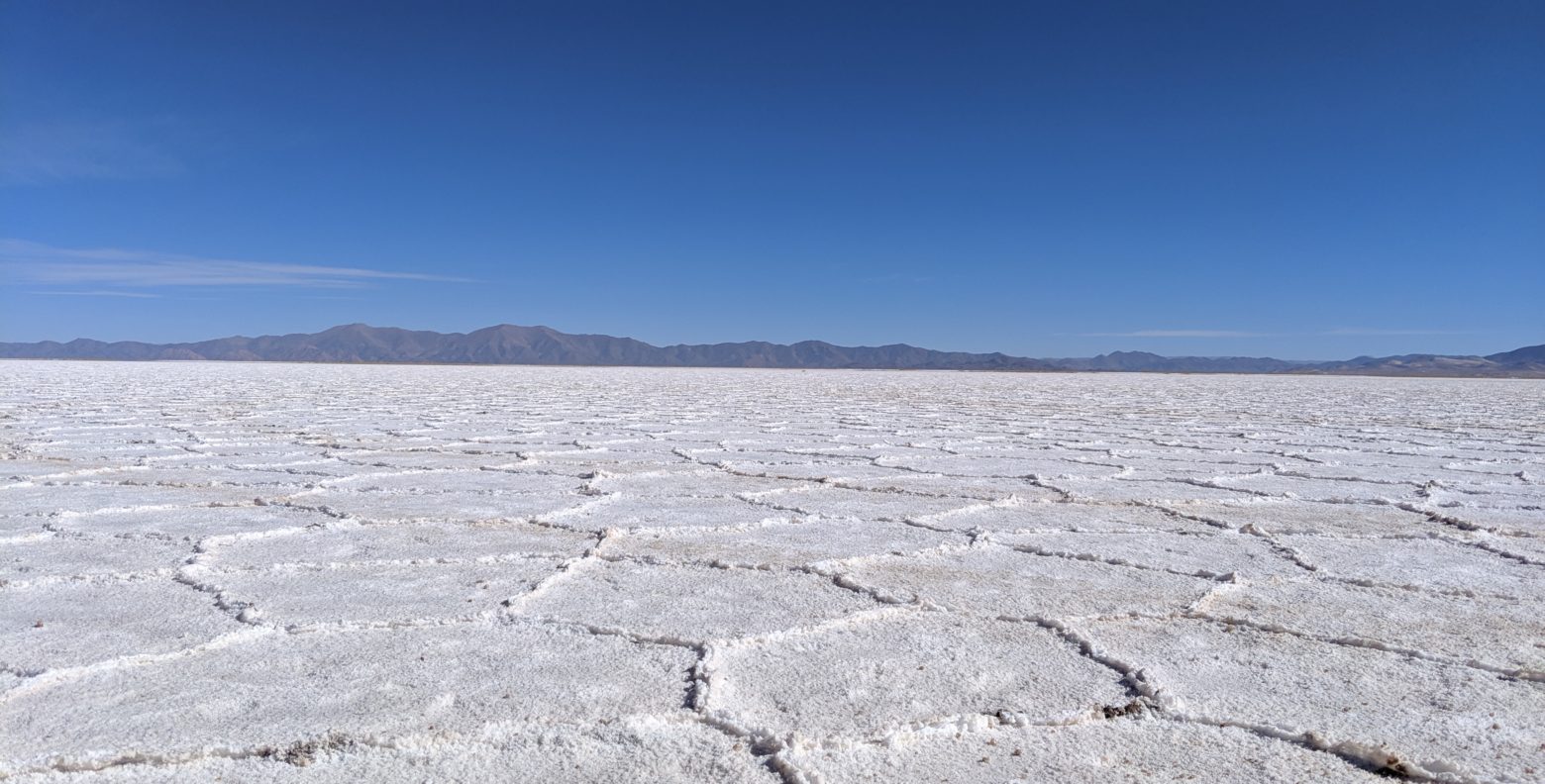Soon after arriving in Argentina, Justin and I discovered torrontés, a citrus-forward, mostly dry wine (according to Justin and Wikipedia). We hadn’t heard of it before, but it’s everywhere here! We wanted to explore more of Argentina, so we decided to head to Cafayete—home to torrontés, and probably the second most popular wine region in the country.
The biggest wine region in Argentina is well-known Mendoza, which sits on Argentina’s western border with Chile, in the Andes Mountains. It’s especially known for malbec. Cafayete, in the northwest province of Salta, is lesser-known (at least to your average tourist like us), but we figured that was all the more reason to go! Plus, Salta and the neighboring province of Jujuy (pronounced “Hoo-hooey”—it always makes me giggle!) are home to some incredible scenery, including the Salinas Grandes salt flats.
A road trip is the best way to see this area. So we arrived in Salta, the main city in the province, after a quick two-plus hour flight on a Wednesday night. We picked up our little Chevy Prisma from FIT Car (the only rental agency that had an automatic car) and hit the road the next morning. We flew back to Buenos Aires on a Sunday night, which gave us four full days of road tripping.
Road Trip Day One: Salta to Cafayete
We headed out around 8 a.m. to complete our three-hour drive south, so we would get to Cafayete early and have as much time as possible to drink vino!
The first half of the drive was through towns and farmland. But the second half takes you through the Quebrada de Las Conchas natural reserve, a red rock canyon-type area with cool rock formations. There are a few scenic viewpoints you can stop at and some hiking trails along the way, but who has time to hike when you have wine waiting for you?

Once you get out of the Quebrada de Las Conchas, you’re in Cafayete, located in a mountain valley. Cafayete is the highest altitude wine region in the world, according to the wineries there!
Our first stop this day was our hotel, Patios de Cafayete. It was a bit of a splurge, but it was worth it! It’s located on the property of Bodega El Esteco winery, in an old farmhouse from the 1800s. We had a delicious lunch sitting outside in the sun, with views of the mountains and vineyards. We got a head start on wine tasting while we waited for our tour and tasting at Bodega El Esteco. (FYI, here bodega=winery, not an NYC corner store!)
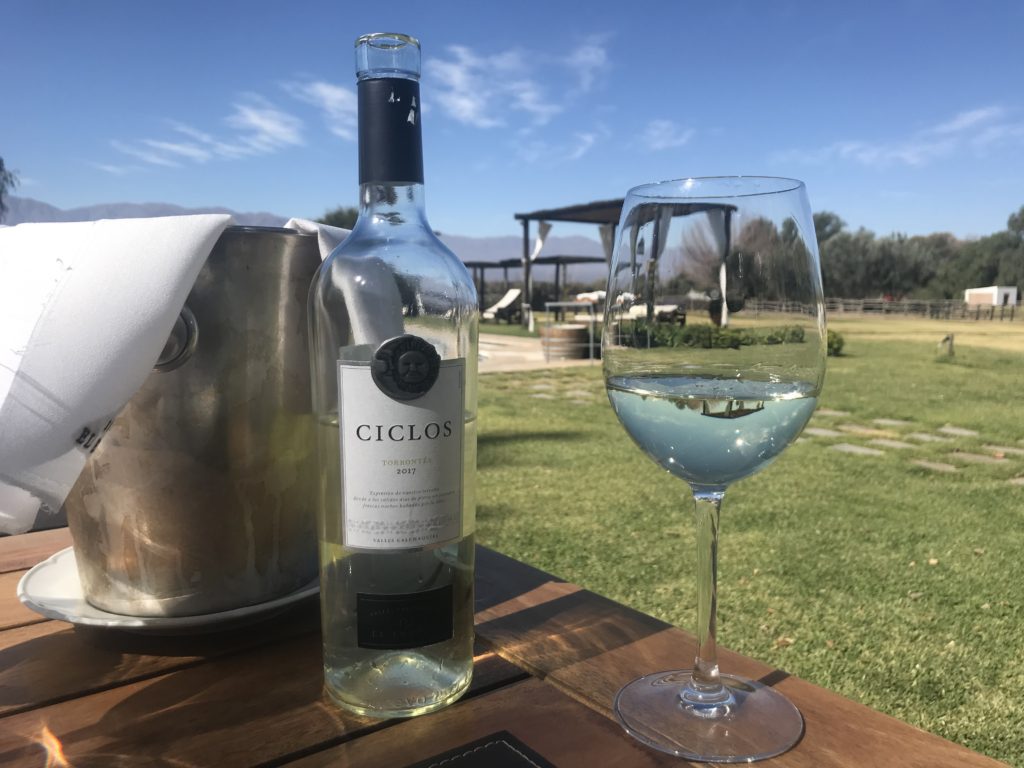
Bodega El Esteco is one of the bigger and more well-known wineries in Cafayate, so it was really interesting to take a tour there. As far as the tasting, I’m no wine expert, so I’ll just say we had torrontés, rosé, a pinot noir and more that were great!
Day Two: Cafayete
We stayed in Cafayete again today to try some more wine. Unfortunately, we couldn’t stay at the same hotel because it was all booked, so we moved to a hotel in the town center of Cafayete. This ended up working out perfectly, because while it was delightful to spend a day enjoying the wine and the views from our hotel, you had to get in a cab to get to any other wineries from there. In the town, there are a bunch of bodegas you can walk to, so that’s what we got to do this day. It was the best of both worlds!
We stopped at Bodega Nanni, where we did a wine tasting for about 150 pesos (about $3). Then we shared a bottle (or two) and ate lunch in a cute little courtyard in the sun. We accidentally ended up staying for hours because we kept ordering empanadas. (They were SO good.) Next, we went to Bodega El Porvenir, a few blocks away, where they let us crash a tour and tasting with a French family.
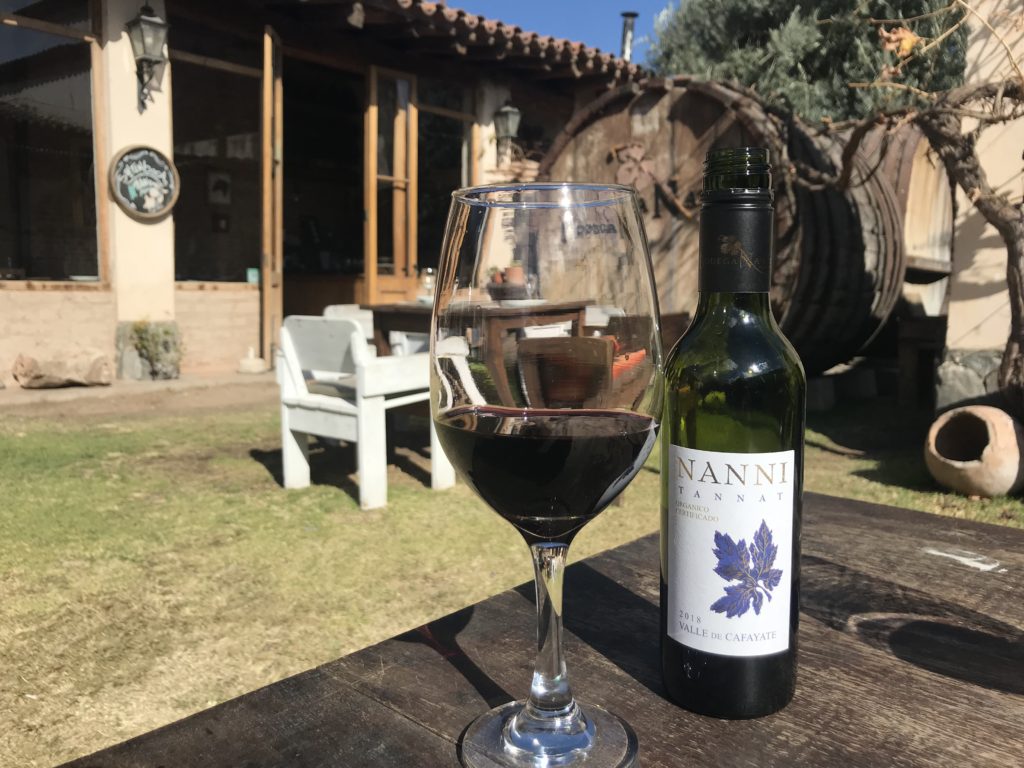
We also tried wine ice cream, which is all over Cafayate! I had the torrontés flavor, of course.
Day Three: Cafayete to Tilcara
After getting some much-needed sleep and recovering from the long day of wine drinking the day before, we were off again. We headed north of Salta to a town called Tilcara, in the Jujuy province.

Most of this seven-hour drive, once you get out of Quebrada de Las Conchas, is just farmland until you’re close to Tilcara. All of the sudden, you get into a desert landscape with mountains that are different shades of red and classic-looking cactuses dotting the landscape.

Tilcara is a little town in the mountains that is a popular base for travelers. We didn’t spend much time here, but Tilcara and the surrounding region were very different than the area around Buenos Aires. Unlike other parts of Argentina, it has a rich indigenous heritage. It reminded us more of Peru, which makes sense, because we learned the Inca empire did stretch to this area of Argentina!
Day Four: Tilcara to Salinas Grandes to Purmamarca to Salta
On our last day, we got up early to make it to the Salinas Grandes, the salt flats.
The Salinas Grandes were about an hour-and-a-half drive from Tilcara, up a windy mountain road with beautiful views. The road was pretty well maintained and paved, but the height made it seem a little treacherous!
Argentina’s Salinas Grandes aren’t as big or famous as the Salar de Uyuni salt flats in neighboring Bolivia, but having never seen any before, I thought these were pretty impressive.
It’s just a bunch of salt, packed into the ground, but it looks like snow or desert. As far as you can see, it’s just a flat, white expanse.
You can walk out on the salt flats a little bit, but if you want to go farther out in your car, you have to pay for a guide. This seemed kind of annoying, but we were glad we decided to do this! The salt flats are cool either way, but it was much cooler to go out farther—you can see how expansive they are. The best part was that the tour guide is also your photographer and takes those cheesy perspective photos (see below). We were trying to be too cool to do them at first, but she insisted and it ended up being super fun!

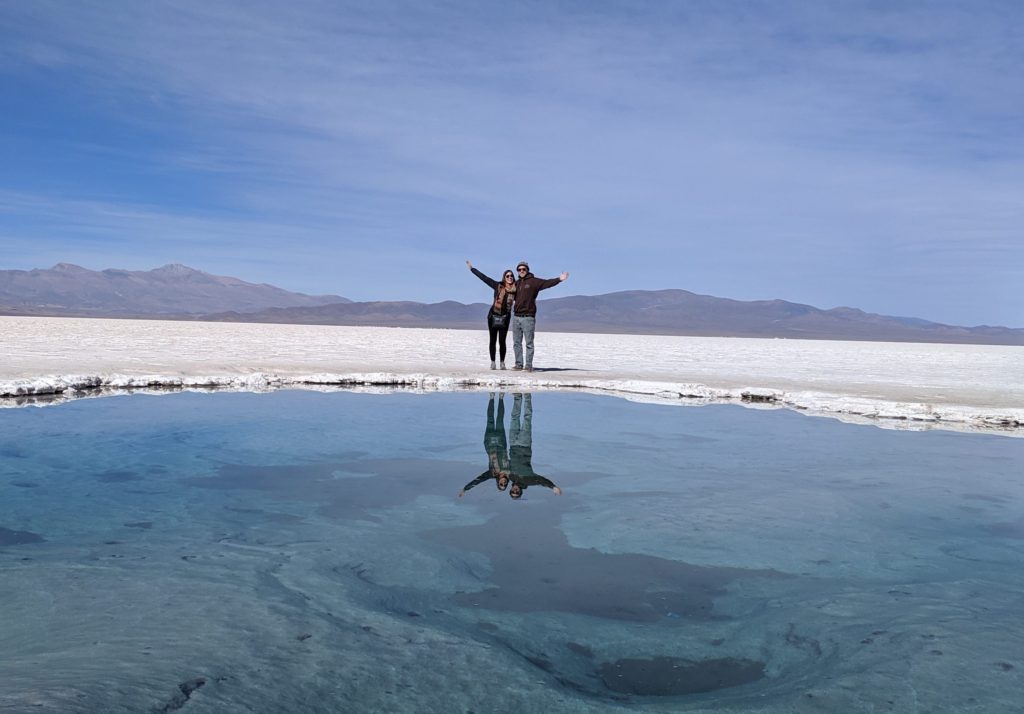
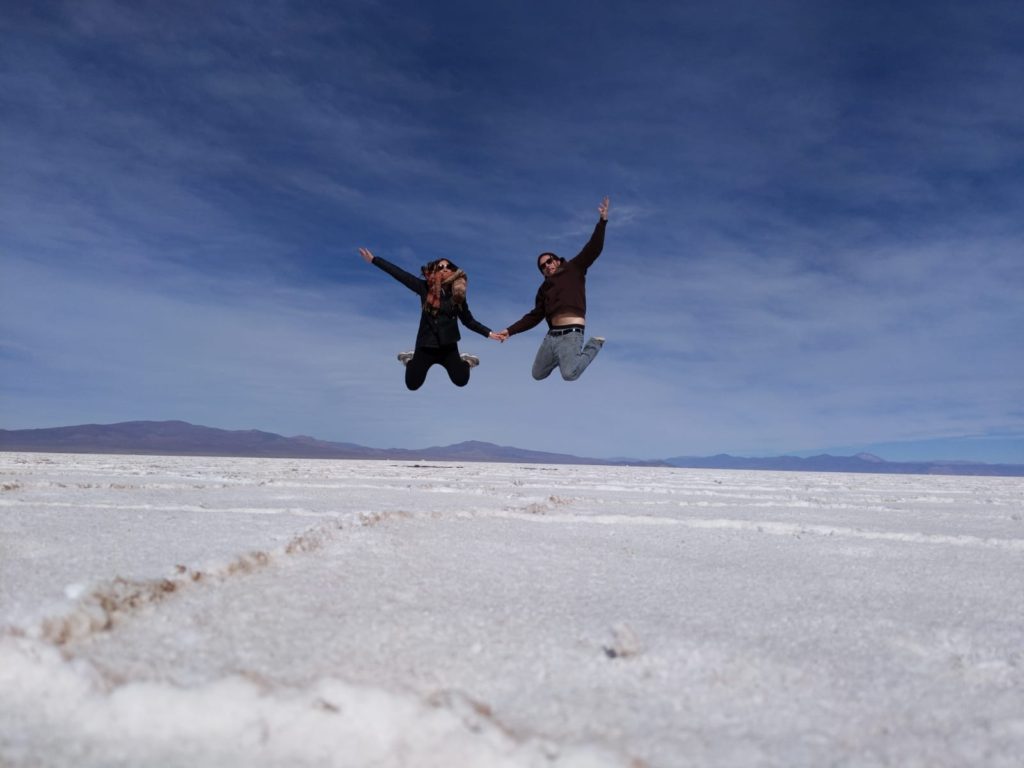
On our drive back, we stopped in Purmamarca, a little town that is home to the Cerro de los Siete Colores, a mountain with seven different shades of red. We also grabbed some quick tortillas rellenas from a street stand. This regional dish is essentially a cooked tortilla filled with cheese and meat or vegetables. Between multiple tortillas rellenas here, and the empanadas in Cafayete, I never wanted to look at another cheese-filled, doughy food ever again—even though they were so good!

Then, we had a three-hour drive back to Salta to get on our plane that night.
Since getting back from this trip, Justin and I have been spending our time enjoying Buenos Aires, but in about a week we’ll head to Iguazú Falls. This giant waterfall, on the Argentina-Brazil border in northeast Argentina, is the one place that everyone here has told me we need to go, so I’ll be sharing our experiences from that trip soon!
